Disulfiram for the treatment of cocaine dependence
- PMID: 38180268
- PMCID: PMC10767770
- DOI: 10.1002/14651858.CD007024.pub3
Disulfiram for the treatment of cocaine dependence
Abstract
Background: Cocaine is a psychostimulant used by approximately 0.4% of the general population worldwide. Cocaine dependence is a chronic mental disorder characterised by the inability to control cocaine use and a host of severe medical and psychosocial complications. There is current no approved pharmacological treatment for cocaine dependence. Some researchers have proposed disulfiram, a medication approved to treat alcohol use disorder. This is an update of a Cochrane review first published in 2010.
Objectives: To evaluate the efficacy and safety of disulfiram for the treatment of cocaine dependence.
Search methods: We updated our searches of the following databases to August 2022: the Cochrane Drugs and Alcohol Group Specialised Register, CENTRAL, MEDLINE, Embase, CINAHL, and PsycINFO. We also searched for ongoing and unpublished studies via two trials registries. We handsearched the references of topic-related systematic reviews and included studies. The searches had no language restrictions.
Selection criteria: We included randomised controlled trials that evaluated disulfiram alone or associated with psychosocial interventions versus placebo, no intervention, other pharmacological interventions, or any psychosocial intervention for the treatment of cocaine dependence.
Data collection and analysis: We used standard methodological procedures expected by Cochrane.
Main results: Thirteen studies (1191 participants) met our inclusion criteria. Disulfiram versus placebo or no treatment Disulfiram compared to placebo may increase the number of people who are abstinent at the end of treatment (point abstinence; risk ratio (RR) 1.58, 95% confidence interval (CI) 1.05 to 2.36; 3 datasets, 142 participants; low-certainty evidence). However, compared to placebo or no pharmacological treatment, disulfiram may have little or no effect on frequency of cocaine use (standardised mean difference (SMD) -0.11 standard deviations (SDs), 95% CI -0.39 to 0.17; 13 datasets, 818 participants), amount of cocaine use (SMD -0.00 SDs, 95% CI -0.30 to 0.30; 7 datasets, 376 participants), continuous abstinence (RR 1.23, 95% CI 0.80 to 1.91; 6 datasets, 386 participants), and dropout for any reason (RR 1.20, 95% CI 0.92 to 1.55; 14 datasets, 841 participants). The certainty of the evidence was low for all these outcomes. We are unsure about the effects of disulfiram versus placebo on dropout due to adverse events (RR 12.97, 95% CI 0.77 to 218.37; 1 study, 67 participants) and on the occurrence of adverse events (RR 3.00, 95% CI 0.35 to 25.98), because the certainty of the evidence was very low for these outcomes. Disulfiram versus naltrexone Disulfiram compared with naltrexone may reduce the frequency of cocaine use (mean difference (MD) -1.90 days, 95% CI -3.37 to -0.43; 2 datasets, 123 participants; low-certainty evidence) and may have little or no effect on amount of cocaine use (SMD 0.12 SDs, 95% CI -0.27 to 0.51, 2 datasets, 123 participants; low-certainty evidence). We are unsure about the effect of disulfiram versus naltrexone on dropout for any reason (RR 0.86, 95% CI 0.56 to 1.32, 3 datasets, 131 participants) and dropout due to adverse events (RR 0.50, 95% CI 0.07 to 3.55; 1 dataset, 8 participants), because the certainty of the evidence was very low for these outcomes.
Authors' conclusions: Our results show that disulfiram compared to placebo may increase point abstinence. However, disulfiram compared to placebo or no pharmacological treatment may have little or no effect on frequency of cocaine use, amount of cocaine use, continued abstinence, and dropout for any reason. We are unsure if disulfiram has any adverse effects in this population. Caution is required when transferring our results to clinical practice.
Trial registration: ClinicalTrials.gov https://clinicaltrials.gov/ct2/show/NCT02134002 NCT00000278 NCT00580827.
Copyright © 2023 The Cochrane Collaboration. Published by John Wiley & Sons, Ltd.
Conflict of interest statement
FT: none known SM is the Joint Co‐ordinating Editor of Cochrane Drugs and Alcohol Group. She was not involved in the editorial process of the current protocol. ET: none known RV: none known SV: none known PP: none known RA: is an Editor of Cochrane Drugs and Alcohol Group. She was not involved in the editorial process of the current protocol.
Figures
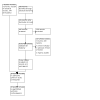
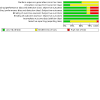

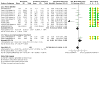

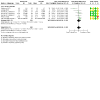

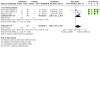

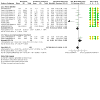



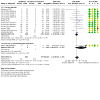
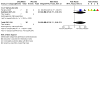
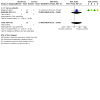
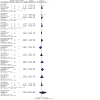
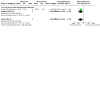
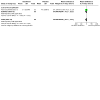
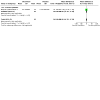
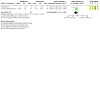
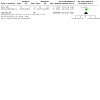



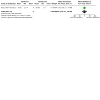

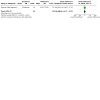

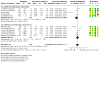
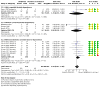
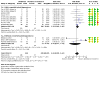
Update of
-
Disulfiram for the treatment of cocaine dependence.Cochrane Database Syst Rev. 2010 Jan 20;(1):CD007024. doi: 10.1002/14651858.CD007024.pub2. Cochrane Database Syst Rev. 2010. Update in: Cochrane Database Syst Rev. 2024 Jan 5;1:CD007024. doi: 10.1002/14651858.CD007024.pub3. PMID: 20091613 Updated.
References
References to studies included in this review
Baldacara 2013 {published data only}
-
- ACTRN12611000103965. Disulfiram for the treatment of crack dependence. A pilot study. anzctr.org.au/Trial/Registration/TrialReview.aspx?ACTRN=12611000103965 (first received 31 January 2012).
-
- Baldaçara L, Diniz TA, Parreira BL, Milhomem JJ, Almeida LJ, Fernandes CC. Could disulfiram be a new treatment for crack cocaine dependence? A pilot study. Brazilian Journal of Psychiatry 2013;35:97-8. - PubMed
Carroll 1993 {published data only}
-
- Carroll K, Ziedonis D, O'Malley S, McCance-Katz E, Gordon L, Rounsaville B. Pharmacological interventions for alcohol- and cocaine-abusing individuals: a pilot study of disulfiram vs. naltrexone. American Journal on Addictions 1993;2:77-9.
Carroll 1998 dataset a {published data only}
-
- Carroll KM, Ball SA, McCance E, Rounsaville B. Treatment for cocaine and alcohol dependence with psychotherapy and disulfiram. Addiction 1998;93(5):713-28. - PubMed
Carroll 1998 dataset b {published data only}
-
- Carroll KM, Ball SA, McCance E, Rounsaville B. Treatment for cocaine and alcohol dependence with psychotherapy and disulfiram. Addiction 1998;93(5):713-28. - PubMed
Carroll 2004 dataset a {published data only}
Carroll 2004 dataset b {published data only}
Carroll 2012 dataset a {published data only}
Carroll 2012 dataset b {published data only}
Carroll 2016 dataset a {published data only}
-
- De Vito EE, Dong G, Kober H, Xu J, Carroll K, Potenza MN. Neural effects of treatment in a trial of behavioral therapies and disulfiram for cocaine dependence. In: Drug and Alcohol Dependence. Vol. 171. 2017:e54.
-
- NCT00350870. CBT with disulfiram and contingency management. clinicaltrials.gov/show/NCT00350870 (first received 11 July 2006).
Carroll 2016 dataset b {published data only}
George 2000 {published data only}
-
- George TP, Chawarski MC, Pakes J, Carroll KM, Kosten TDR, Schottenfeld RS. Disulfiram versus placebo for cocaine dependence in Buprenorhine-mantained subjects: a preliminary trial. Biological Psychiatry 2000;47:1080-6. - PubMed
Grassi 2007 dataset a {published data only}
-
- Grassi MC, Cioce AM, Giudici FD, Antonilli L, Nencini P. Short-term efficacy of disulfiram or naltrexone in reducing positive urinalysis for both cocaine and cocaethylene in cocaine abusers: a pilot study. Pharmacological Research 2007;55(2):117-21. - PubMed
Grassi 2007 dataset b {published data only}
-
- Grassi MC, Cioce AM, Giudici FD, Antonilli L, Nencini P. Short-term efficacy of disulfiram or naltrexone in reducing positive urinalysis for both cocaine and cocaethylene in cocaine abusers: a pilot study. Pharmacological Research 2007;55(2):117-21. - PubMed
Kosten 2013 {published data only}
-
- NCT00000278. Disulfiram for cocaine-alcohol abuse - 3. clinicaltrials.gov/show/NCT00000278 (first received 21 September 1999).
-
- NCT00149630. Pharmacogenetics of disulfiram for cocaine. clinicaltrials.gov/show/NCT00149630 (first received 8 September 2005).
-
- NCT00729300. A study of the relationship between disulfiram and cocaine self-administration. clinicaltrials.gov/show/NCT00729300 (first received 7 August 2008).
Oliveto 2011 dataset a {published data only}
-
- NCT00395850. Disulfiram for cocaine abuse. clinicaltrials.gov/show/NCT00395850 (first received 2 November 2006).
-
- NCT00580827. Clinical efficacy of disulfiram in LAAM-maintained cocaine abusers. clinicaltrials.gov/show/ NCT00580827 (first received 27 December 2007).
Oliveto 2011 dataset b {published data only}
-
- NCT00395850. Disulfiram for Cocaine Abuse. clinicaltrials.gov/show/ NCT00395850 (first received 2 November 2006). [ClinicalTrials.gov Identifier: NCT00395850.]
Oliveto 2011 dataset c {published data only}
-
- NCT00395850. Disulfiram for cocaine abuse. clinicaltrials.gov/show/ NCT00395850;(first received 2 November 2006).
Petrakis 2000 {published data only}
-
- Petrakis IL, Carroll KM, Nich C, Gordon LT, McCance-Katz EF, Frankforte T, et al. Disulfiram treatment for cocaine dependence in Methadone maintained opioid addicts. Addiction 2000;95(2):219-28. - PubMed
Pettinati 2008 dataset a {published data only}
-
- NCT00142844. Combination of disulfiram plus naltrexone to treat both cocaine- and alcohol-dependent individuals - 1 [Two medications, disulfiram and naltrexone, in the treatment of patients with both cocaine and alcohol dependence]. clinicaltrials.gov/show/NCT00142844 (first received 2 September 2005). [Combination of Disulfiram Plus Naltrexone to Treat Both Cocaine- and Alcohol-dependent Individuals - 1 - Full Text View - ClinicalTrials.gov]
Pettinati 2008 dataset b {published data only}
Schottenfeld 2013 {published data only}
-
- NCT00913484. Disulfiram for cocaine abuse in buprenorphine treatment. clinicaltrials.gov/show/ NCT00913484 (first received 4 June 2009).
-
- Schottenfeld RS, Chawarski MC, Cubells JF, George TP, Lappalainen J, Kosten TR. Randomized clinical trial of disulfiram for cocaine dependence or abuse during buprenorphine treatment. Drug and Alcohol Dependence 2013;136:36-42. - PubMed
References to studies excluded from this review
Assistance Publique ‐ Hôpitaux de Paris 2014 {published data only}
-
- NCT02134002. A PET Exploration of the Mechanism of Action of Dopamine Beta-hydroxylase Inhibition in Cocaine Addicts (RAPID). clinicaltrials.gov/show/NCT02134002 (first received 8 May 2014).
Baker 2007 {published data only}
Carroll 2000 {published data only}
-
- Carroll KM, Nich C, Ball SA, McCance E, Frankforter TL, Rounsaville. One-year follow-up of disulfiram and psychotherapy for cocaine-alcohol users: sustained effects of treatment. Addiction 2000;95(9):1335-49. - PubMed
DeVito 2014 {published data only}
Easton 2007 {published data only}
-
- Easton CJ, Babuscio T, Carroll KM. Treatment retention and outcome among cocaine-dependent patients with and without active criminal justice involvement. Journal of the American Academy of Psychiatry and the Law 2007;35(1):83-91. - PubMed
Haile 2012 {published data only}
Jofre‐Bonet 2004 {published data only}
McCance 1996 {published data only}
-
- McCance EF, Kosten TR, Hameedi F, Jatlow P. Disulfiram treatment of cocaine abuse; findings from a dose-response study. In: Louis S Harris , editors(s). NIDA Research Monograph. Problems of Drug Dependence 1996: Proceedings of the 58th Annual Scientific Meeting, the College on Problems of Drug Dependence, Inc. Vol. 174. Rockville, MD: U.S. Department of Health and Human Services, National Institute on Drug Abuse, 1997:138.
McCance 1998a {published data only}
-
- McCance-Katz EF, Kosten TR, Jatlow P. Disulfiram effects on acute cocaine administration. Drug and Alcohol Dependence 1998;52(1):27-39. - PubMed
McCance 1998b {published data only}
-
- McCance-Katz EF, Kosten TR, Jatlow P. Chronic disulfiram treatment effects on intranasal cocaine administration: initial results. Biological Psychiatry 1998;43(7):540-3. - PubMed
Milligan 2004 {published data only}
Nahata 2015 {published data only}
-
- Nahata R, Mancino MJ, Hendrickson H, Song L, Thostenson JD, Oliveto A. Prognostic relevance of dopamine beta-hydroxylase levels on disulfiram treatment at higher doses of cocaine dependence in methadone-stabilized patients: a secondary analysis. In: Drug and Alcohol Dependence. Vol. 146. 2015:e48.
Pantalon 2002 {published data only}
-
- Pantalon MV, Nich C, Frankforter T, Carroll KM, University of Rhode Island Change Assessment. The URICA as a measure of motivation to change among treatment-seeking individuals with concurrent alcohol and cocaine problems. Psychology of Addictive Behaviors 2002;16(4):299-307. - PubMed
References to ongoing studies
NCT00000278 {unpublished data only}
-
- NCT00000278. Disulfiram for cocaine-alcohol abuse. clinicaltrials.gov/show/NCT00000278 (first received 21 September 1999).
NCT00094289 {published data only}
-
- NCT00094289. Interactions between cocaine and ethanol and disulfiram - 1. clinicaltrials.gov/show/NCT00094289 (first received 15 October 2004).
NCT00580827 {unpublished data only}
-
- NCT00580827. clinical efficacy of disulfiram in LAAM-maintained cocaine abusers. clinicaltrials.gov/show/NCT00580827 (first received 27 December 2007).
Additional references
Amato 2007
Amato 2011
Atkins 2004
Baker 2007
Bentzley 2021
Buchholz 2019
-
- Buchholz J, Saxon AJ. Medications to treat cocaine use disorders: current options. Current Opinion in Psychiatry 2019;32(4):275-81. [PMID: ] - PubMed
Castells 2016
Chan 2019
Deeks 2017
-
- Deeks JJ, Higgins JP, Altman DG (editors) on behalf of the Cochrane Statistical Methods Group. Chapter 9: Analysing data and undertaking meta-analyses. In: Cochrane Handbook for Systematic Reviews of Interventions version 5.2.0. Cochrane, 2017.
Di Chiara 1988
Drevets 1999
-
- Drevets WC, Price JC, Kupfer DJ, Kinahan PE, Lopresti B, Holt D et al. PET measures of amphetamine-induced dopamine release in ventral versus dorsal striatum. Neuropsychopharmacology 1999;21(6):694-709. - PubMed
Drevets 2001
-
- Drevets WC, Gautier C, Price JC, Kupfer DJ, Kinahan PE, Grace AA, et al. Amphetamine-induced dopamine release in human ventral striatum correlates with euphoria. Biological Psychiatry 2001;49(2):81-96. - PubMed
DSM‐5
-
- American Psychiatric Association. Diagnostic and Statistical Manual of Mental Disorders, Fifth Edition. American Psychiatric Association, 2013.
DSM‐III‐R
-
- American Psychiatric Association. Diagnostic and Statistical Manual of Mental Disorders, 3rd Edition, Revised. Washington DC: American Psychiatric Association, 1987.
DSM‐IV
-
- American Psychiatric Association. Diagnostic and Statistical Manual of Mental Disorders, Fourth Edition. Washington DC: American Psychiatric Association, 1994.
EMCDDA 2022
-
- European Monitoring Centre for Drugs and Drug Addiction. European Drug Report 2022: Trends and Developments. Publications Office of the European Union, Luxembourg. www.emcdda.europa.eu/system/files/publications/14644/EDR_2022_18-ONLINE.pdf.
Eskandari 2022
Farrell 2019
First 1995
-
- First MB, Spitzer RL, Gibbon M, Williams JB. Structured Clinical Interview for DSM-IV, Patient Edition. 1995 edition. Washington, DC: American Psychiatric Press, 1995.
GBD 2018
-
- GBD 2016 Alcohol and Drug Use Collaborators. The global burden of disease attributable to alcohol and drug use in 195 countries and territories, 1990-2016: a systematic analysis for the Global Burden of Disease Study 2016. Lancet Psychiatry 2018;5(12):987-1012. [DOI: 10.1016/S2215-0366(18)30337-7] - DOI - PMC - PubMed
George 2000
-
- George TP, Chawarski MC, Pakes J, Carroll KM, Kosten TR, Schottenfeld RS. Disulfiram versus placebo for cocaine dependence in buprenorphine-maintained subjects: a preliminary trial. Biological Psychiatry 2000;47(12):1080-6. - PubMed
GRADEpro 2015 [Computer program]
-
- Hamilton (ON). GRADEpro GDT. McMaster University (developed by Evidence Prime), 2015.
Grassi 2007
-
- Grassi MC, Cioce AM, Giudici FD, Antonilli L, Nencini P. Short-term efficacy of disulfiram or naltrexone in reducing positive urinalysis for both cocaine and cocaethylene in cocaine abusers: a pilot study. Pharmacological Research 2007;55(2):117-21. - PubMed
Hamilton 1959
-
- Hamilton M. The assessment of anxiety states by rating. British Journal of Psychiatry 1959;32:50-5. - PubMed
Hamilton 1960
Higgins 2003
Higgins 2008
-
- Higgins JP, Green S, editor(s). Cochrane Handbook for Systematic Reviews of Interventions Version 5.0.0 (updated February 2008). The Cochrane Collaboration, 2008. Available from training.cochrane.org/handbook/archive/v5.0.0/.
Higgins 2011
-
- Higgins JP, Green S, editor(s). Cochrane Handbook for Systematic Reviews of Interventions Version 5.1.0 (updated March 2011). The Cochrane Collaboration, 2011. Available from training.cochrane.org/handbook/archive/v5.1/.
Higgins 2022
-
- Higgins JP, Thomas J, Chandler J, Cumpston M, Li T, Page MJ, Welch VA, editor(s). Cochrane Handbook for Systematic Reviews of Interventions Version 6.3 (updated February 2022). Cochrane, 2022. training.cochrane.org/handbook/archive/v6.3.
Indave 2016
Kleczkowska 2021
Lima 2003
MacKillop 2022
-
- MacKillop J, Agabio R, Feldstein Ewing SW, Heilig M, Kelly JF, Leggio L, Lingford-Hughes A, Palmer AA, Parry CD, Ray L, Rehm J Hazardous drinking and alcohol use disorders Nat Rev Dis Primers 2022 Dec 22, 8(1):80 doi: 101038/s41572-022-00406-1 PMID: 36550121, PMCID: PMC10284465. Hazardous drinking and alcohol use disorders. Nat Rev Dis Primers 2022 Dec 22;8(1):80. [DOI: 10.1038/s41572-022-00406-1] [PMID: ] - DOI - PMC - PubMed
Malcolm 2008
Martin 2022
McCance 1998a
-
- McCance-Katz EF, Kosten TR, Jatlow P. Disulfiram effects on acute cocaine administration. Drug and Alcohol Dependence 1998;52(1):27-39. - PubMed
McCance 1998b
-
- McCance-Katz EF, Kosten TR, Jatlow P. Chronic disulfiram treatment effects on intranasal cocaine administration: initial results. Biological Psychiatry 1998;43(7):540-3. - PubMed
Minozzi 2008
Minozzi 2015a
Minozzi 2015b
Motyka 2022
NCT00149630
-
- NCT00149630. Pharmacogenetics of disulfiram forcocaine (disulfiram) [Effectiveness of disulfiram for treating cocaine dependence in individuals with different dopamine beta hydroxylase (DBH) genes]. clinicaltrials.gov/study/NCT00149630 (first received 6 September 2005).
NCT00218608
-
- NCT00218608. Disulfiram for treating cocaine dependence in individuals maintained on methadone [Disulfiram for cocaine abuse in methadone – patients]. classic.clinicaltrials.gov/ct2/show/NCT00218608 (first received 22 September 2005).
NCT00350649
-
- NCT00350649. Maximizing the efficacy of cognitive behavior therapy and contingency management. clinicaltrials.gov/show/NCT00350649 (first received 11 July 2006).
NCT00395850
-
- NCT00395850. Disulfiram for cocaine abuse. clinicaltrials.gov/study/NCT00395850 (first received 2 November 2006).
Nicholson 1978
Pani 2011
Petrakis 2000
-
- Petrakis IL, Carroll KM, Nich C, Gordon LT, McCance-Katz EF, Frankforter T, et al. Disulfiram treatment for cocaine dependence in methadone-maintained opioid addicts. Addiction 2000;95(2):219-28. - PubMed
Preti 2007
-
- Preti A. New developments in the pharmacotherapy of cocaine abuse. Addiction Biology 2007;12(2):133-51. - PubMed
Rabkin 1992
-
- Rabkin JG, Markowitz JS, Ocepek-Welikson K, Wager SS. General versus systematic inquiry about emergent clinical events with SAFTEE: implications for clinical research. Journal of Clinical Psychopharmacology 1992;12(1):3-10. - PubMed
Roache 2011
Robinson 2012
-
- Robinson SM, Sobell LC, Sobell MB, Leo GI. Reliability of the timeline followback for cocaine, cannabis, and cigarette use. Psychology of Addictive Behaviors 2012;28:154-62. - PubMed
Rohatgi 2022 [Computer program]
-
- WebPlotDigitizer: version 4.6 (automeris.io/WebPlotDigitizer). Rohatgi A. Pacifica, California, USA: Ankit Rohatgi, September, 2022.
Ryan 2019
-
- Ryan SA. Cocaine use in adolescents and young adults. Pediatric Clinics of North America 2019;66(6):1135-47. - PubMed
SAMHSA 2018
-
- Bose J, Hedden SR, Lipari RN, Park-Lee E. Key substance use and mental health indicators in the United States: results from the 2017 national survey on drug use and health. Substance Abuse and Mental Health Services Administration (SAMHSA), U.S. Department of Health and Human Services (HHS), 2018. www.samhsa.gov/data/sites/default/files/cbhsq-reports/NSDUHFFR2017/NSDUH....
Schottenfeld 2004
-
- Schottenfeld RS, Chawarski MC, George TP, Cubells JF. Pharmacogenetics of disulfiram for cocaine treatment: role of DBH genotype. Sixty-Sixth Annual Scientific Meeting of the College on Problems of Drug Dependence June 12-17, 2004.
Soares 2003
Sobell 1992
-
- Sobell LC, Sobell MB. Timeline follow-back: A technique for assessing self-reported alcohol consumption. In: Allen J (Ed) Measuring Alcohol Consumption. Humana Press Inc, 1992:41-65.
Sofuoglu 2006
-
- Sofuoglu M, Kosten TR. Emerging pharmacological strategies in the fight against cocaine addiction. Expert Opinion on Emerging Drugs 2006;11(1):91-8. - PubMed
Spitzer 1990
-
- Spitzer RL, Williams JB, Gibbon M, First MB. Structured Clinical Interview for DSM-III-R, Patient Edition/Non-patient Edition (SCID-P/SCID-NP). 1990 edition. Washington, D.C.: American Psychiatric Press, Inc., 1990.
Spitzer 1992
-
- Spitzer RL, Williams JB, Gibbon M, First MB. The Structured Clinical Interview for DSM-III-R (SCID). I: History, rationale, and description. Archives of General Psychiatry 1992;49(8):624-9. - PubMed
Stout 1994
-
- Stout RL, Wirtz PW, Carbonari JP, Del Boca FK. Ensuring balanced distribution of prognostic factors in treatment outcome research. Journal of Studies on Alcohol 1994;12 (Suppl):70-5. - PubMed
UNOCD 2022
-
- UN Office on Drugs and Crime. World Drug Report 2022. www.unodc.org/unodc/en/data-and-analysis/world-drug-report-2022.html 2022.
Vocci 2005
-
- Vocci FJ, Elkashef A. Pharmacotherapy and other treatments for cocaine abuse and dependence. Current Opinion in Psychiatry 2005;18(3):265-70. - PubMed
References to other published versions of this review
Pani 2008
Publication types
MeSH terms
Substances
Associated data
LinkOut - more resources
Full Text Sources
Medical
Miscellaneous

